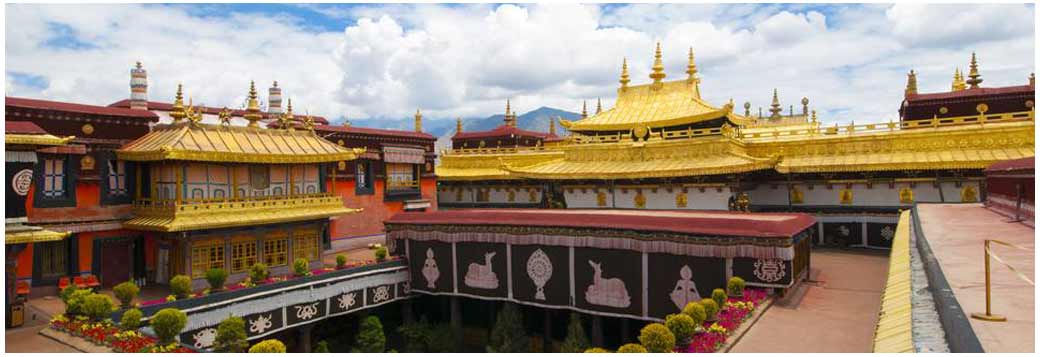The temple, considered the 'spiritual heart of the city' and the most sacred in Tibet, is at the center of an ancient network of Buddhist temples in Lhasa. It is the focal point of commercial activity in the city, with a maze of streets radiating from it. The Jokhang is 1,000 metres (3,300 ft) east of the Potala Palace.Barkhor, the market square in central Lhasa, has a walkway for pilgrims to walk around the temple (which takes about 20 minutes).Barkhor Square is marked by four stone sankang (incense burners), two of which are in front of the temple and two in the rear.
Rasa Thrulnag Tsuklakang ('House of Mysteries' or 'House of Religious Science') was the Jokhang's ancient name. When King Songtsen built the temple his capital city was known as Rasa ('Goats'), since goats were used to move earth during its construction. After the king's death, Rasa became known as Lhasa (Place of the Gods); the temple was called Jokhang¡ª'Temple of the Lord'¡ªderived from Jowo Shakyamuni Buddha, its primary image. The Jokhnag's Chinese name is Dazhao;it is also known as Zuglagkang, Qoikang Monastery and Tsuglhakhange.
Estimated dates for Jokhang Temple¡¯s founding range from 639 to 647 AD. Construction was initiated by King Songtsen Gampo to house an image of Mikyoba (Akshobhya) brough to Tibet as part of the dowry of his Nepali wife Princess Bhrikuti. Ramoche Temple was constructed at the same time to house another Buddha image, Jowo Sakyamuni, brought to Tibet by his Chinese wife Prince Wencheng. It is thought that after the death of Songtsen Gampo, Jowo Sakyamuni was moved from Ramoche Temple for its protection and hidden in Jokhang Temple by Princess Wencheng. The image has remained in Jokhang Temple ever since, and it¡¯s the most revered Buddha image in all of Tibet.
Over the centuries, Jokhang Temple has undergone many renovations, but the basic layout is ancient and differs from that of many other Tibetan religious structures. One crucial difference is the building¡¯s east-west orientation, said to face towards Nepal to honour Princess Bhrikuti. A few interior carved pillars and entrance arches remain from the original 7th-century work of Newari artisans brought from the Kathmanddu Valley in Nepal to work on the construction.
|
|


 |



